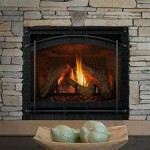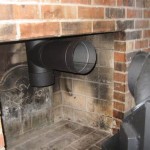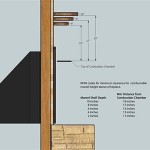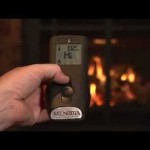Antique Brass Fireplace Tools: A Guide to Their Value and Preservation
Antique brass fireplace tools represent more than mere functional objects; they are tangible pieces of history, reflecting evolving aesthetic tastes, craftsmanship techniques, and societal norms related to hearth and home. These tools, often intricately designed and meticulously crafted, were integral to the management of fires in homes before centralized heating systems became commonplace. As such, their enduring presence in antique markets and private collections highlights their continuing appeal and historical significance. Understanding the value and proper preservation of antique brass fireplace tools necessitates a comprehensive knowledge of their construction, styles, origins, and susceptibility to environmental factors.
The term "antique" generally refers to items that are at least 100 years old. However, in the context of collectibles, the perceived value is often influenced by factors beyond simple age. Rarity, condition, historical provenance, maker's mark, and the complexity of the design all play significant roles in determining the market value of antique brass fireplace tools. Examining these aspects offers insight into a particular tool's intrinsic worth and its place within the broader spectrum of decorative arts.
Brass, an alloy primarily composed of copper and zinc, was a popular material choice for fireplace tools due to its durability, malleability, and attractive golden hue. Its resistance to corrosion, compared to iron, made it a practical choice for objects situated near the heat and moisture of a fireplace. Brass also allows for intricate detailing, making it suitable for decorative embellishments that were common in the past. However, the exact composition of the brass alloy can vary depending on the period and the manufacturer. Identifying the type of brass used can sometimes help to determine the tool's age and origin.
Identifying and Dating Antique Brass Fireplace Tools
Determining the age and origin of antique brass fireplace tools involves a meticulous examination of several key features. The style and design of the tool, including the shape of the handle, the detailing on the shaft, and the overall aesthetic, often provide clues to its era. Historical research into furniture and decorative arts styles can help correlate the tool's design with known periods or artistic movements. For instance, a fireplace tool with elaborate floral motifs might suggest a Victorian-era origin, while a more streamlined and geometric design could point to the Art Deco period.
Maker's marks, when present, are invaluable in establishing the tool's provenance. These marks, typically stamped or engraved onto the tool, can identify the manufacturer or artisan responsible for its creation. Reference books and online databases dedicated to identifying maker's marks can assist in deciphering these often-obscure symbols. However, it is important to note that not all antique brass fireplace tools will bear a maker's mark. The absence of a mark does not necessarily diminish the tool's value; rather, it may simply indicate an origin from a smaller workshop or a period before the widespread adoption of marking practices.
The construction techniques employed in creating the tool can also offer clues to its age and authenticity. Hand-forged tools, characterized by visible hammer marks and subtle irregularities, generally predate those manufactured using mass-production methods. The type of joinery used to connect the various components of the tool, such as soldering, riveting, or threading, can also provide insights into the manufacturing processes prevalent during different periods. Examining the patina, the surface layer that develops on brass over time, can also be informative. A natural, even patina is often indicative of age, while an uneven or heavily polished surface may suggest recent cleaning or restoration.
Assessing the Condition and Value of Antique Brass Fireplace Tools
The condition of an antique brass fireplace tool is a primary determinant of its value. Tools that are in excellent condition, with minimal wear and tear, will generally command higher prices than those that are heavily damaged or poorly maintained. However, it is important to distinguish between genuine wear and tear, which can add to the tool's character and authenticity, and damage that detracts from its aesthetic appeal or functional integrity.
Common forms of damage include dents, scratches, corrosion, and missing components. Dents and scratches can often be overlooked if they are minor and consistent with the tool's age and use. However, severe dents or deep scratches can significantly reduce the tool's value. Corrosion, particularly in the form of verdigris (a green or bluish coating), can be a serious concern, as it can weaken the brass and compromise its structural integrity. Missing components, such as handles, hooks, or decorative elements, can also diminish the tool's value, although replacement parts can sometimes be sourced or fabricated.
The rarity of the tool also plays a crucial role in determining its value. Tools that are part of a limited edition or that represent a unique or unusual design are generally more valuable than those that are more common. The historical provenance of the tool, including its ownership history and any documented associations with notable individuals or events, can also enhance its value. Tools that have been displayed in museums or featured in publications related to decorative arts often command premium prices.
Preserving and Maintaining Antique Brass Fireplace Tools
Proper preservation and maintenance are essential for ensuring the longevity and value of antique brass fireplace tools. The goal of preservation is to stabilize the tool's condition and prevent further deterioration, while the goal of maintenance is to keep the tool clean and free from dust and debris. A conservative approach is generally recommended, focusing on gentle cleaning methods and avoiding harsh chemicals or abrasive materials that could damage the brass.
Regular dusting with a soft cloth is crucial for preventing the accumulation of dust and dirt, which can contribute to corrosion over time. More thorough cleaning can be performed using a mild soap and water solution. The tool should be gently washed with a soft sponge or cloth, taking care to avoid excessive scrubbing. After washing, the tool should be thoroughly rinsed with clean water and dried immediately with a soft, lint-free cloth.
Polishing antique brass fireplace tools is a controversial topic, as excessive polishing can remove the patina and diminish the tools' antique value. However, if polishing is deemed necessary, it should be performed sparingly and using a gentle brass polish specifically formulated for antique items. It is important to test the polish on an inconspicuous area of the tool before applying it to the entire surface. The polish should be applied sparingly and buffed gently with a soft cloth, following the manufacturer's instructions.
Proper storage is also critical for preserving antique brass fireplace tools. The tools should be stored in a dry, well-ventilated area, away from direct sunlight and temperature extremes. If the tools are not being displayed, they should be wrapped in acid-free tissue paper or stored in protective bags to prevent dust and moisture accumulation. Avoid storing the tools in humid environments, such as basements or attics, as this can accelerate corrosion.
For tools that exhibit signs of significant corrosion or damage, professional conservation services may be necessary. Conservation professionals have the expertise and specialized equipment to stabilize the tool's condition, repair damage, and prevent further deterioration. They can also provide advice on proper cleaning and storage techniques.
Ultimately, the value and significance of antique brass fireplace tools lie not only in their monetary worth but also in their ability to connect us to the past. By understanding their history, appreciating their craftsmanship, and implementing proper preservation techniques, these objects can continue to be enjoyed and admired for generations to come.

Old Brass Iron Fireplace Tools English Country Home

Brass Fireplace Tool Set T4965 Charles Nijman Antiques

Vintage Brass Companion Set Fireplace Tools Shovel Tongs Brush Fire Accessories Home Decor Fireside Chez Rai

Vintage Brass Fireplace Tool Set Of 3 Tools Plus Stand

Nice Fireplace Set Made From Brass Vintage Tool

Antique Vintage Style Hunting Theme Brass Fireplace Tool Set Fire Tools

Antique Brass Fireplace Tools Set Norway

Dagan Dg 2532 Five Piece Fireplace Tool Set Polished Brass

Early 20th Century French Antique Polished Brass Fire Tool Set High Style Deco

Dagan Dg 4532 Five Piece Fireplace Tool Set Antique Brass
Related Posts








